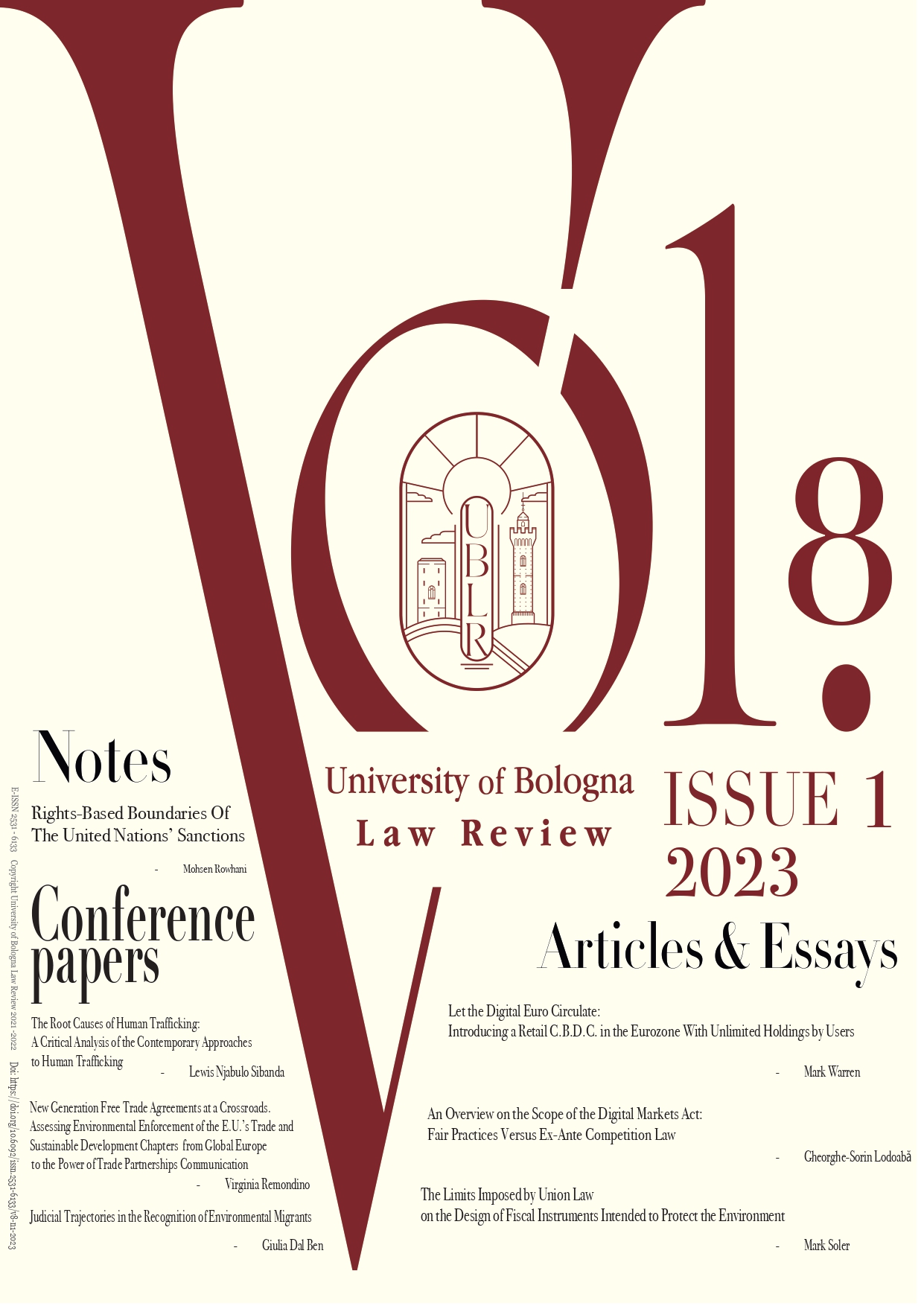The Limits Imposed by Union Law on the Design of Fiscal Instruments Intended to Protect the Environment
DOI:
https://doi.org/10.6092/issn.2531-6133/17358Keywords:
Environmental Taxation, Internal Market, Ecotaxes, State Aid, Circular EconomyAbstract
Since the Treaty of Rome, the protection of local producers by Member States is, in principle, prohibited. Indeed, the Court of Justice of the European Union has, throughout the decades, done its utmost to ensure that the Treaty provisions on the free movement of goods and services serve the goal of greater European integration. While reading these judgments, it is very easy to overlook the fact that taxation was at their core. Indeed, throughout the 1960s and 1970s, numerous taxes on imports and exports became the object of the Court’s most foundational cases, and current legal literature still praises their unifying effect. Seventy years later, Europe, like the rest of the world, must face up to two unprecedented global crises: the collapse of biodiversity on the one hand, and climate change on the other. The recent alarming reports regarding climate change and biodiversity loss mean that, from now onwards, the Union and its Member States must deploy all measures conceivable to reach the objectives set out in international agreements such as the Paris Agreement on Climate Change, the Glasgow Climate Pact and the latest Kunming-Montreal Global Biodiversity Framework. The object of this paper is to analyze which fiscal measures Member States and the Union may adopt to prevent further damage from being done to the environment. Damage which some would say has been primarily caused by failures in the market which the Court of Justice set out to create during the first two decades following the Union’s inception. In this context, the author identifies all the legal constraints which Union law imposes on the design of environmental taxes at national level, together with the constraints which primary law places upon the potential conception of a European-wide environmental tax. The paper opens with a general discussion of the theoretical foundations of environmental taxes. It demonstrates that there exists, at least in theory, an elementary understanding of the essential functions which environmental taxes should possess. It then goes on to discuss the avenues open at the European level for the institutions to act in the fiscal field by adopting Europe-wide environmental taxes. Although the Union seems badly equipped to introduce a general tax on activities which are environmentally harmful, its efforts in matters of indirect taxation merit both praise and critical discussion. In the second part of the paper, the author discusses the principal provisions of Union law which guide Member States in their adoption of environmental taxes. Finally, the author demonstrates that the actual state of Union law does, indeed, permit the utilization of environmental taxes to shift economic demand in favor of environmentally friendly goods. Although Member States continue to enjoy a large margin of appreciation in the field of taxation, the author still believes that a more comprehensive response to the current environmental crisis should ideally originate from the institutions - even if part of it means creating a European-wide environmental tax.
Downloads
Downloads
Published
How to Cite
Issue
Section
License
Copyright (c) 2023 Mark Soler

This work is licensed under a Creative Commons Attribution 4.0 International License.











